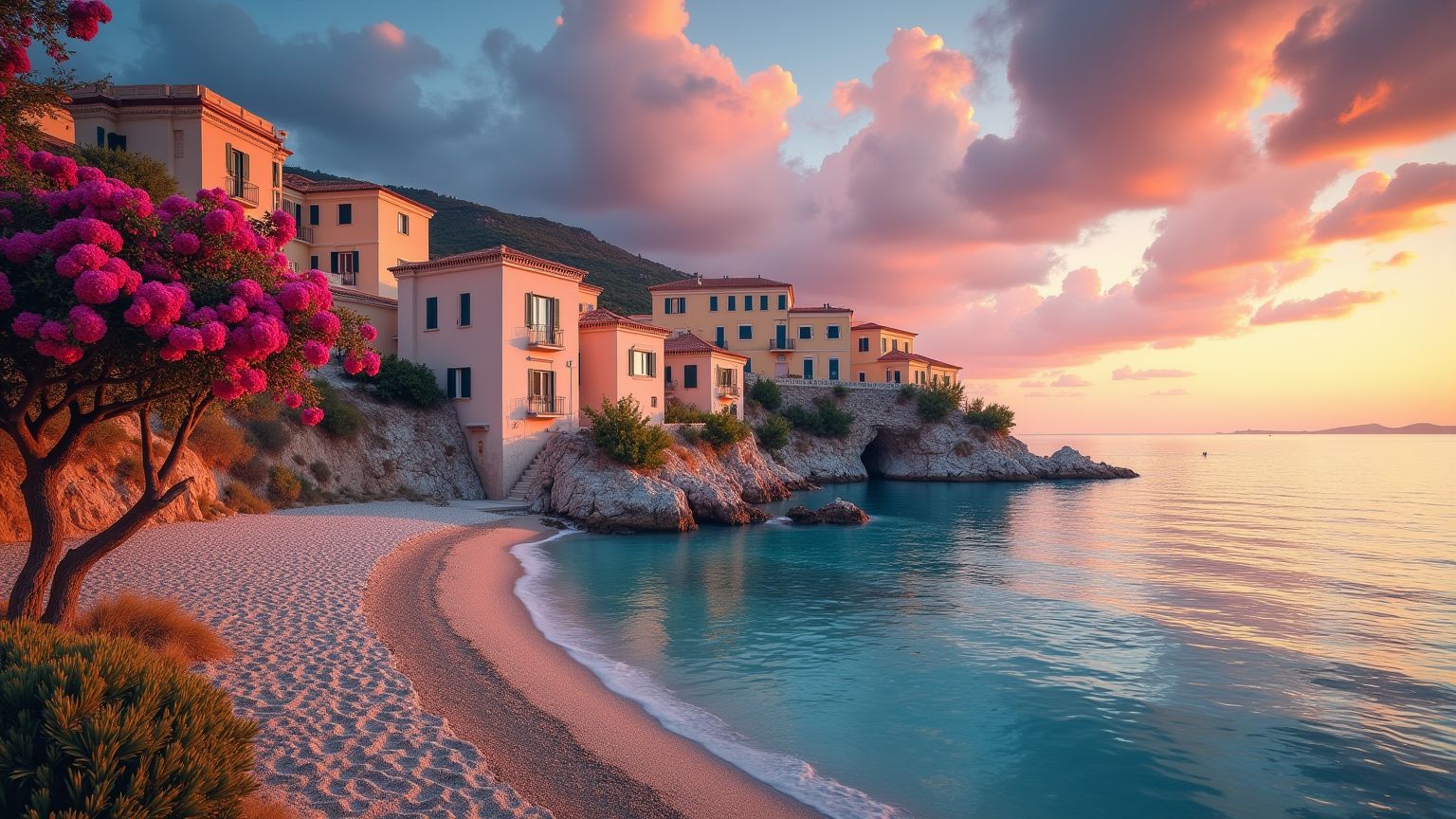Where should I go First for the First Time in Greece? Why the Peloponnese Should Be Your Destination
After two decades guiding starry-eyed travelers through the Greek landscape, I've watched the same scene unfold countless times. Visitors touchdown in Athens, snap their Acropolis selfies, maybe island-hop to Santorini or Mykonos, then jet home convinced they've "experienced Greece." Bless their hearts.
Where should I go first for the first time in Greece? That's the million-drachma question friends constantly ask me. My answer typically raises eyebrows: the Peloponnese peninsula. This magnificent region southwest of Athens packs the authentic essence of Greece without the Instagram crowds elbowing for sunset views.
Let me spill some insider tea about why the Peloponnese deserves to be your Greek introduction, drawing from years of watching visitors fall head over sandals for my country's hidden heart.

Why First-Time Visitors Should Choose the Peloponnese
The Peloponnese hangs from the mainland like a chunky leaf, connected by the slender thread of the Corinth Isthmus. Where should I go first for the first time in Greece? Right here, where you'll discover Greece's soul concentrated in one road-trip friendly package.
The Perfect Blend of Everything Greek
What makes the Peloponnese magical? It's the Swiss Army knife of Greek destinations:
- 🏛️ Ancient ruins that make history buffs weep? Absolutely
- 🏖️ Beaches that belong on screensavers? By the dozen
- 🏔️ Mountain villages frozen in time? Scattered everywhere
- 🍷 Food that ruins you for your local Greek restaurant back home? Just try to button your pants after a week here
Unlike island-hopping adventures where half your precious vacation evaporates on ferries, the Peloponnese lets you experience wildly different landscapes without the travel hangover. Most treasures sit within a 1-3 hour drive of each other—perfect for travelers who want maximum experiences with minimum transit headaches.
No Ferry Drama for First-Timers
For Greece newbies, deciphering ferry schedules can feel like cracking ancient Linear B tablets. Will weather cancel your boat? Will that connection strand you overnight? The Peloponnese whispers "don't worry about it."
With just a rental car and basic map skills, you can explore at your own rhythm on surprisingly decent roads. Where should I go first for the first time in Greece? Somewhere you can reach from Athens Airport within 1-2 hours, crossing either the engineering marvel of the Rio-Antirrio Bridge or the knife-cut Corinth Canal—both worth gawking at independently.
The Greece That Greeks Actually Enjoy
After decades guiding tourists, I've noticed the hollow look in their eyes after leaving places where every interaction feels transactional. The Peloponnese offers sweet relief.
Even at headliner archaeological sites like Olympia, you'll rarely battle the selfie-stick armies that storm the Acropolis. In sleepy villages, you might be the only foreign face locals have seen all week, leading to genuine conversations rather than the glazed tourist-fatigue common on the islands. Where should I go first for the first time in Greece? Somewhere locals haven't developed an allergic reaction to tourists yet.
Must-Visit Peloponnese Destinations for First-Timers
Let me walk you through my personal Peloponnese greatest hits album. Each spot brings something uniquely marvelous to the table, and together they'll give you the richest possible introduction to Greek heritage.
Nafplio: The Perfect Home Base
If you forced me to pick just one Peloponnese home base (please don't), I'd surrender and say Nafplio. This seaside charmer, Greece's first post-independence capital, mixes Venetian elegance, beachfront relaxation, and strategic location like no place else.
For first-time Greece explorers, I recommend parking yourself here for at least 2-3 nights. The old town feels like a film set with its narrow lanes and neoclassical mansions made for evening promenades. Looming above everything, the imposing Palamidi Fortress dares you to climb its 216 steps (though driving up is totally acceptable—I won't judge).
Where should I go first for the first time in Greece? Nafplio wins partly because it's perfectly positioned near archaeological heavy-hitters. Mycenae, Epidaurus, and Tiryns all sit under 30 minutes away, meaning you can explore ancient wonders by day and return to Nafplio's charming tavernas each evening.
🔍 Insider Tip: After a morning of ruin-hopping, cool off at locals-favorite Karathona Beach just outside town. Later, hit Syntagma Square for dinner at Aiolos Taverna and order their goges—a local pasta with scorched milk that I've been evangelizing to clients for years.
Ancient Olympia: Where Athletic Glory Was Born
Where should I go first for the first time in Greece? If you have even passing interest in sports or history, Olympia deserves your attention. This is where the Olympic flame first flickered in 776 BCE, and unlike some archaeological sites that honestly look like random rock piles, Olympia radiates a special energy that connects with even the most history-indifferent visitors.
Game the system by arriving at opening time (8 AM) to dodge both the fierce midday heat and tour bus hordes that descend around 10 AM. The archaeological museum houses the breathtaking Hermes of Praxiteles statue—so perfectly preserved it looks like it might wink at you.
Most visitors miss the opportunity to actually run on the ancient track where Olympic athletes competed thousands of years ago. Standing at that ancient starting line, your imagination can't help but hear phantom cheers echoing across millennia.
💫 Hidden Experience: After exploring the ruins, duck into the modern village of Olympia and hunt down "O Fournos tou Gianni" bakery for olive bread that's unchanged for generations. Pair it with local honey and yogurt for a breakfast that beats hotel buffets any day.
Monemvasia: The Rock That Time Forgot
Jutting from the eastern Peloponnese coast sits one of Greece's most dramatic settlements: Monemvasia. This medieval fortress town clings to a massive rock connected to mainland by a single narrow causeway (the name literally means "single entrance").
What makes Monemvasia extraordinary isn't just its dramatic setting but that it's still a living community. While wandering the narrow, car-free cobblestone pathways lined with Byzantine churches and honey-colored mansions, you'll bump into actual residents watering flowers or hanging laundry from medieval windows.
Where should I go first for the first time in Greece? If you crave time travel, Monemvasia delivers. I practically beg my clients to spend at least one night within the castle walls. There's pure magic in experiencing this place after day-trippers retreat—when evening light bathes stone buildings in gold and local cats reclaim their kingdom. The sunrise view from the upper town across the azure Myrtoan Sea rewards early risers.
✨ Worth Every Euro: Book dinner at Matoula restaurant and sweet-talk your way into a sea-facing terrace table. Their slow-cooked lamb with mountain herbs alongside Monemvasia Winery's distinctive Malvasia wine creates a sense-memory that will haunt you deliciously for years.
The Mani Peninsula: Greece's Final Frontier
The middle finger (geographically speaking) of southern Peloponnese is the Mani Peninsula—a region so fiercely independent it feels like a separate country. Famous for tower houses built during centuries of family blood feuds, Mani represents Greece at its most untamed and authentic.
Here, the landscape transforms dramatically from lush coastal strips to a moon-like interior dominated by the spine of Taygetos mountains. Villages like Vathia and Limeni seem to grow organically from cliff faces or huddle alongside water so blue it hurts your eyes to look directly at it.
Where should I go first for the first time in Greece? If you crave raw, unfiltered Greece, Mani delivers. Don't miss gliding through the otherworldly Diros Caves in tiny boats on underground rivers adorned with nature's chandelier collection. Afterward, hit the coastal hamlet of Gerolimenas where simple tavernas serve fish that jumped from sea to grill with minimal interference.
❤️ Personal Obsession: Take the twisting road to Tainaron, mainland Greece's southernmost point. The walk to Cape Tainaron's lighthouse passes ancient ruins and, according to mythology, one of Hades' entrances to the underworld. Standing where the Ionian and Aegean Seas crash together gives you that rare "edge of the world" feeling that's becoming extinct in our over-toured planet.
Mystras: Byzantine Magnificence on a Mountainside
Just outside modern Sparta lies Mystras, a remarkably intact Byzantine city cascading down a mountainside like a medieval wedding cake. This UNESCO World Heritage site offers a time capsule into Greek life after antiquity but before modernity barged in.
Where should I go first for the first time in Greece? History buffs shouldn't miss Mystras, which unlike many archaeological sites, feels complete enough to truly envision daily medieval life. The Pantanassa Monastery still houses nuns who tend gorgeous gardens and sometimes surprise visitors with Greek coffee and sweet loukoumi.
Plan at least half a day here, starting from the upper entrance and working downhill (your knees will thank me). Wear proper shoes—those Byzantine architects weren't concerned with modern safety standards—and bring water bottles, especially during summer's furnace-like embrace.
🍽️ After Your Visit: The nearby village offers several solid tavernas, but I steer clients to Chromata, where owner Giorgos serves Peloponnesian classics made with ingredients from his family's land. The way he talks about his tomatoes borders on inappropriate, but you'll understand after tasting them.
Practical Tips for Exploring the Peloponnese
After shepherding countless visitors through this region, I've compiled hard-won insights to help first-timers maximize their Peloponnese adventure:
Best Time to Visit
Where should I go first for the first time in Greece? Unlike the islands which essentially hibernate outside summer, the Peloponnese shines year-round. For first-timers, aim for late spring (May-June) or early autumn (September-October). These golden periods offer:
- Pleasant temperatures for exploring ruins without heat stroke
- Dramatically fewer tourists at major sites
- Landscapes still verdant rather than summer's toasted brown
- Accommodation prices that won't require a second mortgage
Spring visits coincide with wildflower explosions and festivals celebrating first harvests. Fall brings grape and olive collecting, with many estates welcoming visitors to participate in traditional harvesting—nothing connects you to Greek culture like stained hands and aching backs from olive picking!
Transportation Realities
The Peloponnese demands wheels. Unlike island adventures, this region reveals itself best by car. The freedom to brake for that inviting beach, roadside honey stand, or panoramic viewpoint makes all the difference between a good trip and an unforgettable one. The road network generally behaves itself, though mountain routes demand respect and patience.
Where should I go first for the first time in Greece? If the thought of navigating Greek roads triggers anxiety, consider hiring a local driver or joining intimate group tours departing from hubs like Nafplio or Kalamata. This lets you absorb scenery while someone familiar with local driving customs handles the logistics.
Strategic Sleeping
Rather than nightly hotel-hopping, establish 2-3 strategic bases for Peloponnese exploration. For a 10-day journey, my ideal trinity would be:
- Nafplio (3-4 nights) - Northeastern Peloponnese coverage
- Kardamyli or Stoupa (3 nights) - Mani Peninsula immersion
- Olympia or Pylos (3 nights) - Western Peloponnese experience
This approach minimizes the pack-unpack cycle while still letting you experience regional highlights without excessive daily driving. Where should I go first for the first time in Greece? Somewhere you can settle in long enough to develop favorite cafes and recognize local characters.
Beyond the Obvious: Peloponnese Hidden Treasures
After covering must-see attractions, let me share some under-the-radar spots that often become surprise highlights for my clients:
The Lousios Gorge: Greece's Secret Valley
Near mountain village Dimitsana, the Lousios Gorge offers hiking through landscapes that defy Greek stereotypes. The rushing river once powered tanneries and gunpowder mills during Greece's independence struggle, and several restored water mills welcome visitors.
The crown jewel is hiking to Prodromos monastery, which seems impossibly glued to the cliff face. Monks still inhabit this peaceful eyrie, and the panoramic gorge views provide internal silence even amid chattering tour groups.
Where should I go first for the first time in Greece? If you appreciate natural drama alongside human ingenuity, the Lousios Gorge delivers both.
Voidokilia Beach: Nature's Perfect Semicircle
While the Peloponnese boasts countless gorgeous beaches, Voidokilia in Messinia stands alone for its mathematically perfect semicircular shape and pristine condition. Protected within a nature reserve, this omega-shaped beach remains beautifully undeveloped—no beach bars, no lounger rentals, just nature showing off.
After swimming in waters clear enough to count sand ripples at depth, hike up to Nestor's Cave for godlike views across the bay. According to Homer, this region was wise King Nestor's domain, making it both visually stunning and mythologically significant.
Arcadia's Mountain Villages: Greek Alps
The central Peloponnese region of Arcadia scattered stone-built villages across mountainsides as if decorating a Christmas cake. Places like Stemnitsa, Dimitsana, and gravity-defying Karytaina offer glimpses into traditional mountain life that contrasts dramatically with coastal experiences.
Where should I go first for the first time in Greece? In winter, these villages transform into cozy retreats with fireplace-warmed tavernas serving hearty mountain fare. Try handmade hylopites pasta and gournopoula (suckling pig) alongside locally produced wines that rarely leave the region.
Culinary Adventures Not to Miss
The Peloponnese functions as Greece's garden, its diverse microclimates producing exceptional agricultural treasures. Where should I go first for the first time in Greece? If you're food-motivated, these experiences alone justify choosing the Peloponnese:
Liquid Gold: Olive Oil Immersion
The region produces some of Greece's most prized olive oils, particularly around Kalamata. Many producers welcome visitors for tastings where you'll learn to detect the grassy, peppery notes of different varieties. The Olive and Olive Oil Museum in Sparta contextualizes this product's central role in Greek culture, history, and economy.
Wine Wanderings
The Peloponnese hosts several wine routes showcasing distinctive Greek varieties like ruby-red Agiorgitiko in Nemea and floral Moschofilero in Mantinia. Many family-run wineries offer tours and tastings, typically with jaw-dropping views across vineyards and mountains.
Domaine Skouras near Argos and Palivos Estate in Nemea provide especially memorable visitor experiences, with thoughtful food pairings highlighting how their wines complement local cuisine.
Toes-in-the-Sand Dining
Some of my core memory meals in Greece have happened at humble tavernas where tables sit literally steps from gentle waves. In spots like Limeni in Mani or Gialova near Pylos, you can devour just-caught fish while hearing the sea whisper nearby.
Where should I go first for the first time in Greece? For the authentic experience, ignore written menus and ask "Ti echete fresko simera?" (What's fresh today?). Accept the owner's recommendations, and always accompany meals with local wine served in metal carafes that sweat in the heat.
Your Perfect Peloponnese Itinerary
For first-timers with 10-14 days to spare, here's my battle-tested itinerary capturing the Peloponnese essence:
Days 1-4: Northeastern Peloponnese
- Base: Nafplio's old town
- Visit Ancient Corinth and Acrocorinth fortress en route from Athens
- Explore bronze-age Mycenae and the beehive Treasury of Atreus
- Experience perfect acoustics at Epidaurus ancient theater
- Wander Nafplio's Venetian alleys and climb to Palamidi fortress
- Optional: Day trip to care-free Hydra island
Days 5-8: Southern Peloponnese
- Base: Kardamyli or medieval Monemvasia
- Explore Byzantine Mystras' monastery-studded hillside
- Road trip through tower-house villages of Mani Peninsula
- Boat through stalactite-decorated Diros Caves
- Lose yourself in medieval Monemvasia's stone labyrinth








